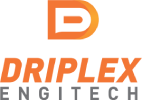For transportation of any kind of media in Road, Rail tankers or even in sea cargo there is a surge in the use of Driplex Drybreak Couplings.
In offshore and hazardous chemical industry connection and disconnection process is problematic and very time consuming, Driplex Drybreak coupling makes the process easier smoother and safer, at the same time greatly reducing fluid losses on disconnection and safe for the environment.
Drybreak coupling can be found in a wide range of industrial applications where fluids and media should be transferred easier, safely and without any leakages. Industries using this technology are very from Refineries, Offshore industries, Petrochemical industries, Tank farms, Shipping companies, Jetties and ports and Chemical process industries.
The most common operation connecting hoses for transfer liquids in the chemical companies and hydrocarbon industry is with Camlock or flange connections. These are open systems as they do not half an automatic valve closing on disconnection and opening on the connection. Example of that jetty to supply ships, ships to rigs and containers with drilling systems.
In an open system, after operation when the operator disconnects the hoses, the remaining hold up or the residual will leak and sometimes the operator forgets to close the valves on the manifold before the hose connection this will generate a huge amount of leakages.
These spillages and accidents can be avoided using Drybreak couplings.
Drybreaks are gaining popularity in the offshore and onshore environment for the transfer of corrosion and scale inhibitors, various chemicals, methanol, glycol, mud, slurry, potable water and diesel.
The advantages of Drybreak technology over traditionally used open systems are; quick connection and disconnection, no spillage, no accidents and they also save service media that is being transferred.


Post a comment